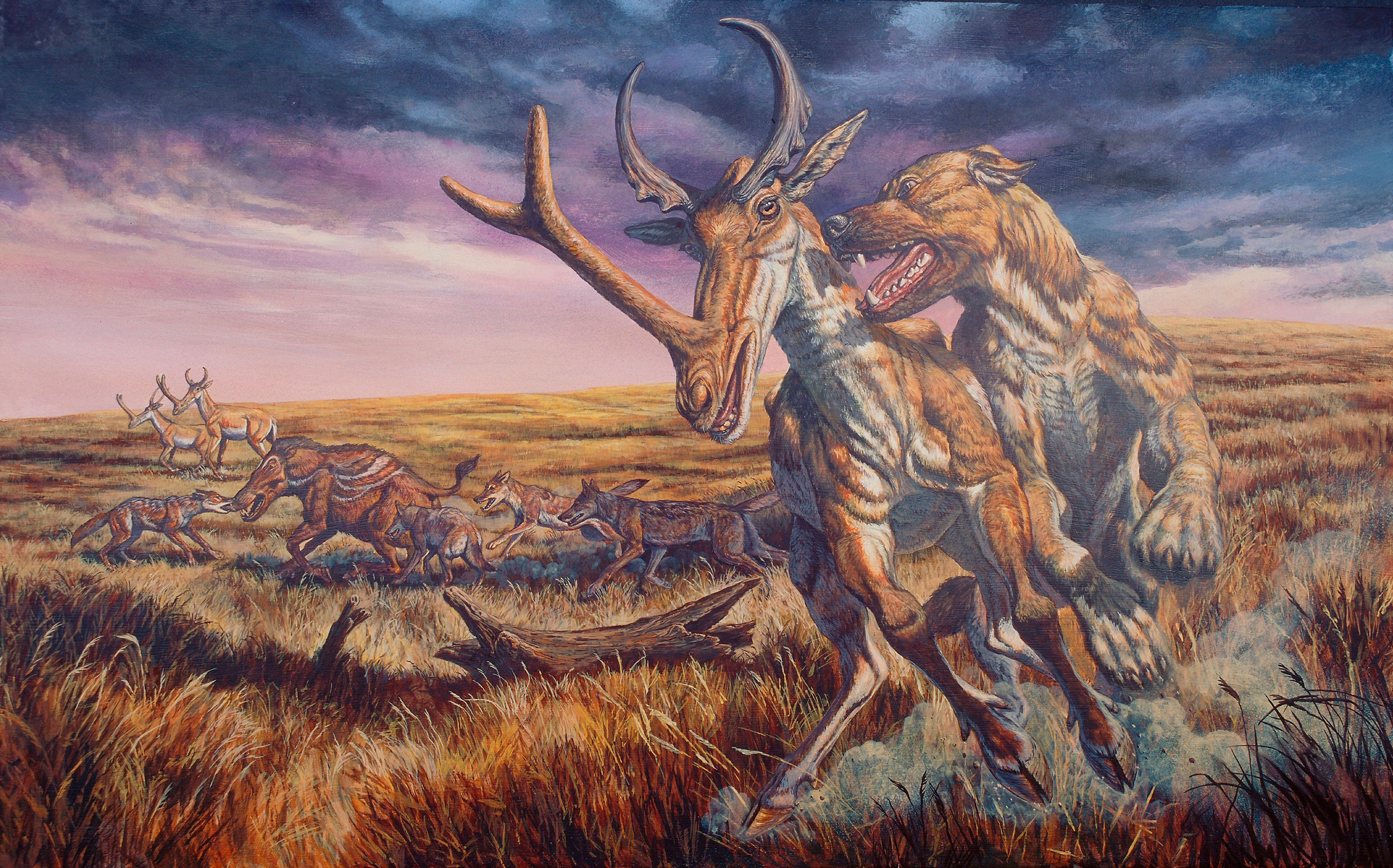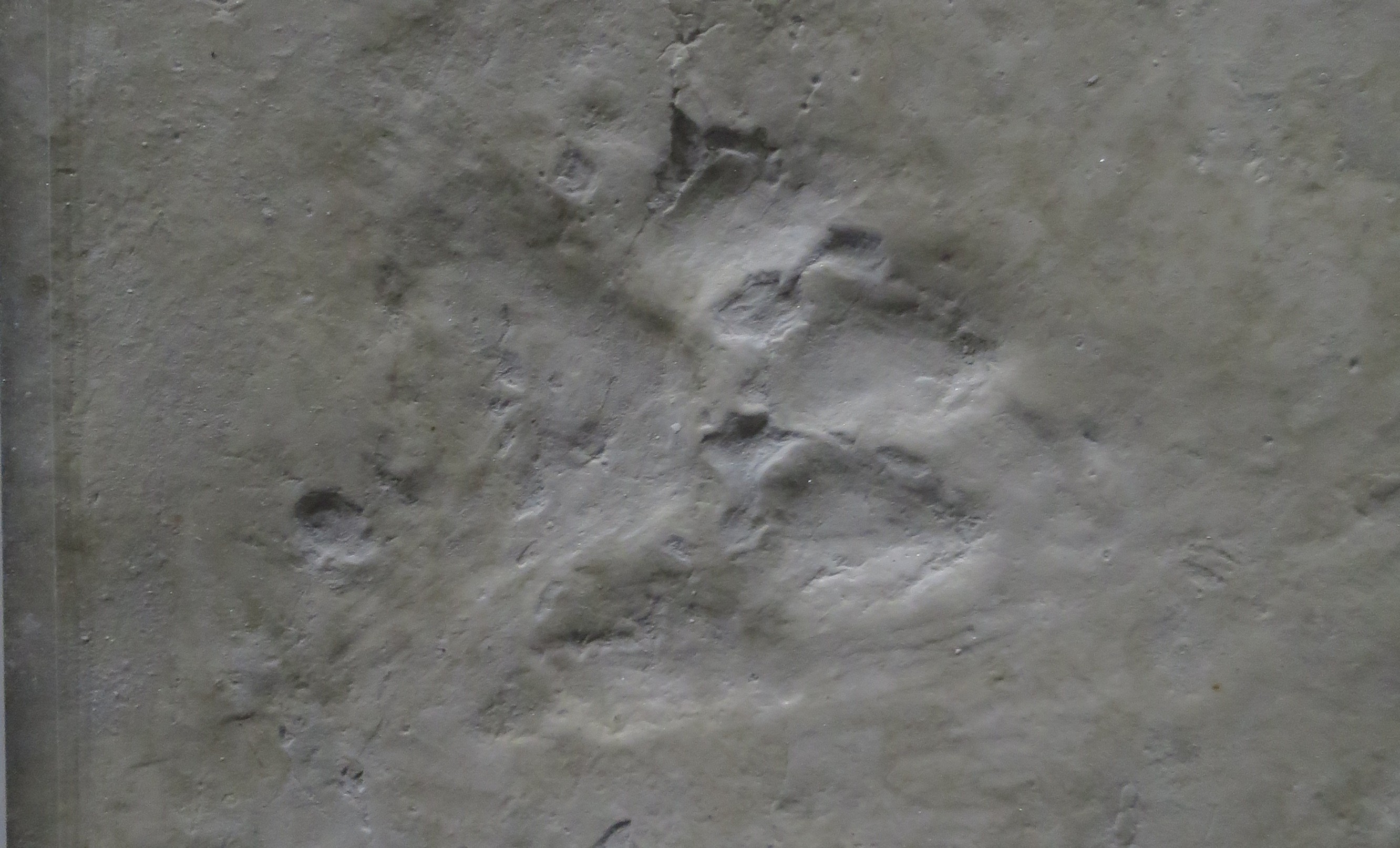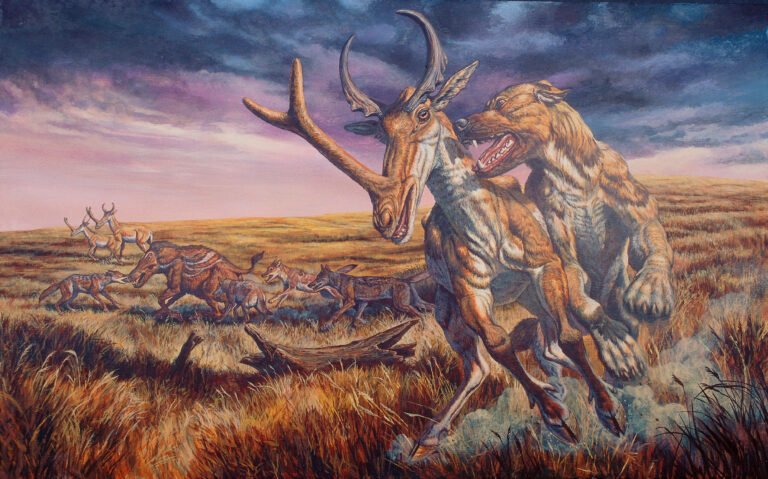Ancient footprints have revealed that large, bone-crushing dogs stalked the ashy wastes of North America in the wake of a devastating Yellowstone supereruption 12 million years ago.
Researchers uncovered the footprints above the skeletons of extinct rhinoceroses called Teleoceras in the Ashfall Fossil Beds of northeastern Nebraska. The dog tracks mark the first direct evidence of large carnivores in the beds, which are nicknamed “Rhino Pompeii” because they have preserved so many Teleoceras rhinos that perished in widespread fallout from volcanic activity at Yellowstone.
Ancient horses, giraffe-like camels, numerous rhinos and various other animals were entombed in glass-like ash at the Nebraska site. However, until the footprint discovery, researchers hadn’t found hard evidence of large meat eaters in the beds, which is unusual, given the abundance of preserved prey.
The footprints were up to 3.2 inches (8 centimeters) long and 3 inches (7.5 cm) wide, matching those of the large, extinct canids Aelurodon taxoides and Epicyon saevus, which crushed and ate bones like modern hyenas do. Not only do the footprints confirm the presence of large carnivores in the beds, but their positioning above the rhino layers suggests that the dogs survived the cataclysmic event that wiped out many animals.
“Survival of top predators after ecological collapse is a little unexpected and has a lot to teach us about how life responds and recovers after disasters,” Poust said. Big predators sit at the top of the food chain, so they normally starve if it collapses.

Poust presented preliminary findings from his research Nov. 12 at the Society of Vertebrate Paleontology 2025 annual meeting in Birmingham, England. The findings haven’t been peer-reviewed yet, as Poust and his colleagues still have to complete their research and submit it to a journal.
The clearest trackways were uncovered in 2014 and 2023, according to the researchers. While the footprints have yet to be formally described in a journal, their existence isn’t a secret. Poust said people visiting the Ashfall Fossil Beds State Historical Park can see the footprints, and his team has subjected the tracks to laser scanning within the public’s view. Epicyon is also listed on the University of Nebraska State Museum’s ashfall animals webpage.
Northeastern Nebraska once had a similar environment to the African plains. Poust noted that the Ashfall Fossil Beds preserved a seasonal lake that hosted aquatic life, like turtles, and attracted all manner of animals.
“Imagine a watering hole similar to those on the savanna today, but with slightly unfamiliar animals,” Poust said. “The sandy shoreline would have been shared by flocks of birds and herds of short-legged rhinos, camels, and five species of horses, some with three toes on each foot.”

The dog tracks are present in multiple ash layers and point in different directions, which Poust and his colleagues say is an indication that the predators were making extended or repeated visits to the area after it was caked in volcanic fallout.
It’s not yet clear how the dogs were surviving at the time, but one possibility is that they fed on buried rhinos and other carcasses in the immediate aftermath of the eruption.
“There is some evidence that they may have scavenged among the animals who didn’t survive, using the buried rhinos as a food cache,” Poust said. “But since we haven’t found the bones of these meat eaters, we aren’t sure yet whether this was enough to see them through to better times, or whether they eventually had to depart to seek their fortunes elsewhere in the massive disaster zone that covered much of North America.”


